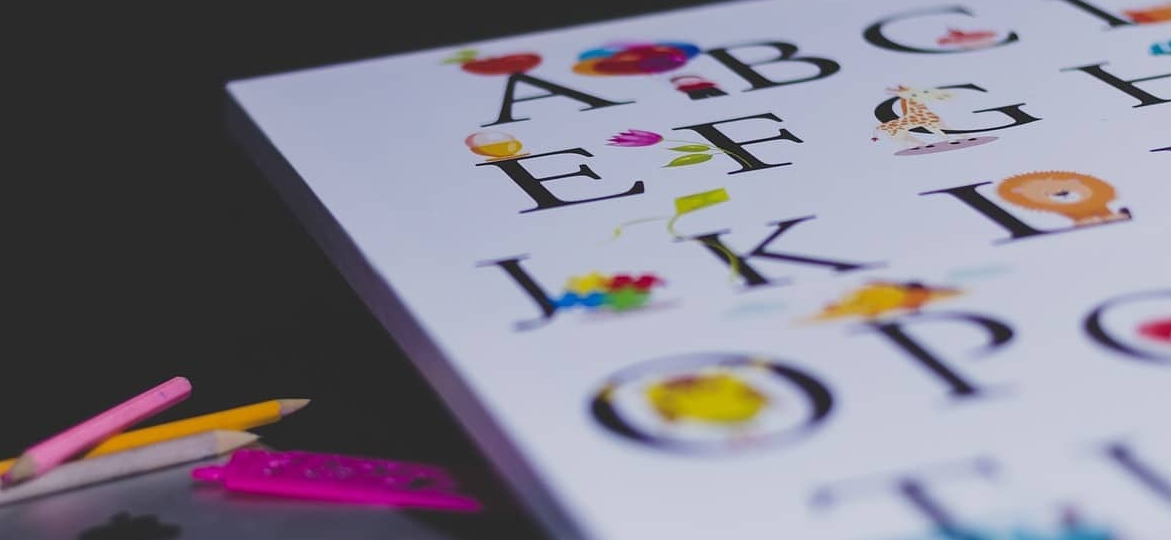In English we don’t have any accent. That’s why, when learning Spanish, we have some troubles in recognizing, writing and pronouncing them correctly.
In this article we’ll try to go through all the Spanish accents, trying to explain their basic rules. Here’s what you’ll discover:
- Spanish accents… and where to find them;
- Spanish rules of accentuation;
- How to improve your Spanish pronunciation;
- Enhance your Spanish online with General Español by GlobalExam.
Read on to find out everything about Spanish accents!
Spanish accents… and where to find them
As we’ve already mentioned, in English we don’t use any accent. Guess what, Spanish does. A lot. Everywhere. The Spanish accent is called “tilde” and the accent is written from lower left to upper right (e.g. á)
Following you’ll find a table showing the Spanish letters of the alphabet that can have accents.
| Letter | Letter with accent | Example | Translation of the example |
|---|---|---|---|
| A | Á - á | Lámpara | Lamp |
| E | É - é | Médico | Doctor |
| I | Í - í | Ciudadanía | Citizenship |
| O | Ó - ó | Canción | Song |
| U | Ú - ú | Música | Music |
As you can see, the accent can only be written on vowels in Spanish (finally a good news!). But how can you know if you need to put an accent at all? In the next section you’ll discover it!
Spanish rules of accentuation
There are three different kinds of words, depending on their syllabic division and accentuation: agudas, llanas and esdrújulas.
Agudas
We are speaking about words that have the stress on the very last syllable. We’ll write the accent (tilde) on those words whose last syllable ends in a vowel, the letter “n”, or the letter “s”. E.g. rincón, algún, compás. You won’t put an accent on words ending in a consonant other than “n” or “s”. E.g. infantil, jugar, comer.
Llanas
The words with the stress on the second last syllable. They always have an accent (tilde) with the exception of words ending in “n”, “s” and in a vowel. E.g. árbol, lápiz ≠ suerte, hambre, canciones
Esdrújulas
The last group contains words with the stress on the third last syllable. All the words of this group have an accent (tilde). E.g. número, lágrima, cómico. We also have words called “sobreesdrújulas”: words having the stress on a syllable prior to the third last syllable. They also always come with an accent. E.g. trágicamente, dígaselo. If you thought that was all, we’re sorry to say there’s more. Indeed, there are many other rules related to accents in Spanish. Let’s take a look at them!

More Spanish accentuation rules
Questions
All interrogative words when used in a question, direct or indirect, have an accent. E.g. Direct questions: ¿Quién? (Who?); ¿Qué? (What? / Which?); ¿Dónde? (Where?); ¿Cuándo? (When?); ¿Por qué? (Why?); ¿Cuánto? (How much/many?); and so on. Indirect questions: No sé cómo hace (I don’t know how he/she does).
Demonstrative Pronouns
Spanish accents are used in demonstrative pronouns to differentiate them from the demonstrative adjectives, which are identical except that they don’t have an accent mark. Pronouns take the place of a noun, while adjectives describe nouns. E.g. No quiero comer este postre, prefiero ése (I don’t want to eat this dessert, I prefer that one). Here are some demonstrative pronouns: éste (this); aquél (that over there); ésa (that); aquéllas (those over there); eso (that); etc.
Homonyms
There are some words which have two different meanings depending on one tiny difference: the accent.
Here are some common Spanish homonyms:
tu (possessive adjective: your) – tú (subject: you)
el (masculine article: the) – él (personal pronoun; he)
se (reflexive and indirect object pronoun) – sé (I know)
si (if) – sí (yes)
How to improve your Spanish pronunciation
If you want to improve your pronunciation in Spanish and have a great accent, you should follow these tips!
Learn vowel sounds
It’s important for you to know that, contrary to English, Spanish pronunciation is pretty regular, which means that each vowel has only one sound.
A is pronounced like the “a” in ‘”car”
E is pronounced like the “e” in “bed”
I is pronounced like the “ee” in “bee”
O is pronounced like the “o” in “go”
U is pronounced like the “oo” in “too”
There are rules for Spanish diphthongs and the dieresis. “ue” and “ui” after the letter “q” and “g” are read “e” (like in “bed”). E.g. guerrilla, queso, quién, etc. If there’s a dieresis it is read like separate sounds: “üi”. E.g. pingüino (this case is very rare).
The best way to reinforce this skill is to listen to native speakers and copy what they do. You can find a Spanish friend for a language exchange or look for a native teacher!
Beware of accents!
To read in Spanish with the correct pronunciation the general rule is to put the stress on the second last syllable of a word. E.g. Casa (house), manzana (apple), domingo (Sunday), etc. Otherwise, words are marked with an accent, as we saw in the previous sections. E.g. música (music), corazón (heart), sartén (pan).
With practice, accentuation will become intuitive. Until then, there are some exercises you can do to help you practice. For example, while listening to an audiobook that comes with the text you can: 1) Simply listen to the audio track and read the text at the same time; 2) before listening, try to read aloud and them verify with the audio track; 3) try to underline the vowels you think are stressed in the text and then verify with the audiobook.
Practice “r” sound
The letter “r” in Spanish makes two different sounds: the r suave, or soft r, and the r fuerte, or strong r. The r fuerte, or “rolled r”, is one of the most difficult sounds for English speakers, because we don’t have this sound in our native language. When is the r fuerte used?
- In words with two r’s in a row (e.g. arriba)
- When there’s a single “r” at the beginning of a word (e.g. rojo)
- When there’s a single “r” after the letters “l,” “n,” or “s” (e.g. alrededor)
- When there’s a single “r” after the prefix sub- (e.g. subrayar)
And how can you practice to have a perfect r fuerte and speak like a native?
- One great (and fun) tip is to pretend you are purring like a cat: try to do “prrrrrrrr” many times and see the changes in your “r”!
- Try saying the word “butter” very quickly. Pay attention to the spot that your tongue hits on the “tt” in “butter”: that’s the spot where it should be when you roll your r’s. Now try to say some Spanish words with r fuerte, like: correr, alrededor, rostro, etc.
Practice “t” and “d” sounds
In Spanish, the letter “t” is not pronounced the same way as in English. In Spanish you have to put your tongue against the top of your front teeth, to produce a “t” sound which is softer than the English one. “D” sound also changes a bit. In Spanish, you must make the “d” sound with your tongue barely touching the back of your top teeth. The result is again a much softer sound. Practice these two sounds by putting them into Spanish words like: tapas, tío, dirección, etc.
Beware of “z” sound
There are two ways to pronounce the Spanish “z,” depending on the country you are in. In Latin America (and some parts of Spain) “z” is pronounced like an English “s.” In the rest of Spain the letter “z” makes a sound like the “th” in the English word “tooth.”
Both ways are correct, you can choose which one you prefer, but it’s important that you know what you are doing so that when you write you don’t put an “s” instead of a “z”!
Follow the Spanish rhythm!
Every language has its own accent, sounds and…rhythm. If you listen to native Spanish speakers talking, you’ll notice that they link or blend certain words together. Moreover, every Spanish speaking-country has a different rhythm and pronunciation: listen to native speakers from different countries and imitate their accent!
How to learn Spanish online with Global General
The best website for learning Spanish is Global General. This e-learning course created by GlobalExam is dedicated to beginner and intermediate students from A1 to B2.
We offer 5 languages: English, Spanish, French, Italian and German. Every level of every language requires a minimum number of studying hours to pass and is developed according to the CEFR standards. This modern and dynamic method offers an all-inclusive approach which will let you practice all of your skills: writing, reading, listening, speaking! Here are more details on what you’ll find on our e-learning platform:
- Plenty of flashcards to train your memory and help you learn new useful words
- Simulations to help you practice in real context, for all the competencies
- A “did you know” section to help you improve your knowledge of the language
- 5000 detailed corrections
- Personalised feedback from our coaches
- Validation of the acquired competencies every 5 simulations
- 150 hours of unique content and 500 audio tracks
- GlobalExam’s blog: many useful articles to discover plenty of interesting facts related to the language you are learning!
With Global General you can learn Spanish from your home or office, at the bus station, on the train…well, from whenever you want! Study at your own pace with a course that suits your needs! Sign up and start learning with GlobalExam today!



